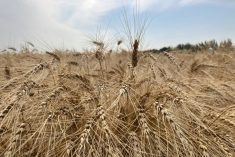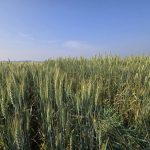A Manitoba hydrologist with 30 years of experience says extreme precipitation causes flooding, not drainage.
Eric Blais, who works for an engineering consulting firm in Winnipeg, said the debate over drainage in Saskatchewan and whether it causes flooding on the Assiniboine River misses the point.
The amount and frequency of rain and snow are the key variables behind flooding, not drainage.
“If you look at the 2014 flood event, that came completely out of left field. We’ve never had a flood like 2014 before. It set records on the Upper Assiniboine…. It’s probably still a one in 200 year event, or better.”
Read Also

Canada appoints new envoy to India
Canada announced on Thursday it had appointed a new high commissioner, or ambassador, to India in the latest sign of improving ties between the two trading partners.
Approximately 150-200 mm of rain fell on a broad area of eastern Saskatchewan and western Manitoba in late June, leading to record water levels on the Assiniboine in July.
In the aftermath of the flood, which cost Manitoba an estimated $200 million in flood protection measures and damages, politicians, conservation groups and farmers said unauthorized and rampant drainage in eastern Saskatchewan was responsible.
Blais said there’s “no doubt” that farmland drainage changes the hydrologic regime and reduces the amount of water stored on the land.
“In the long run it’s probably not a great thing…. You’re also altering groundwater levels and you’re changing water quality,” he said. “(But) when you’re talking about these really, really extreme hydrologic events, I don’t think you can point the finger solely at the producer…. If you’re in a very wet climatic period and all the storages (on the land) get used up, all bets are off. Your normal assumption about how much water will run off the land is wrong because the soil can’t hold any more water and all the wetlands are full of water.”
Earlier this year John Pomeroy, a University of Saskatchewan water expert, released a report on the Smith Creek in eastern Saskatchewan and how the loss of wetlands has increased flows in the creek.
Ducks Unlimited and other organizations have pointed to Pomeroy’s research, saying it proves flooding severity is related to the loss of wetlands.
Blais said wetlands are a factor but flooding occurred on the Prairies before the arrival of the backhoe and the drainage plow.
“One of the largest floods on the Assiniboine was in 1888,” he said. “Same, the biggest flood on the Red (River) was in 1826, before there was any drainage.”















